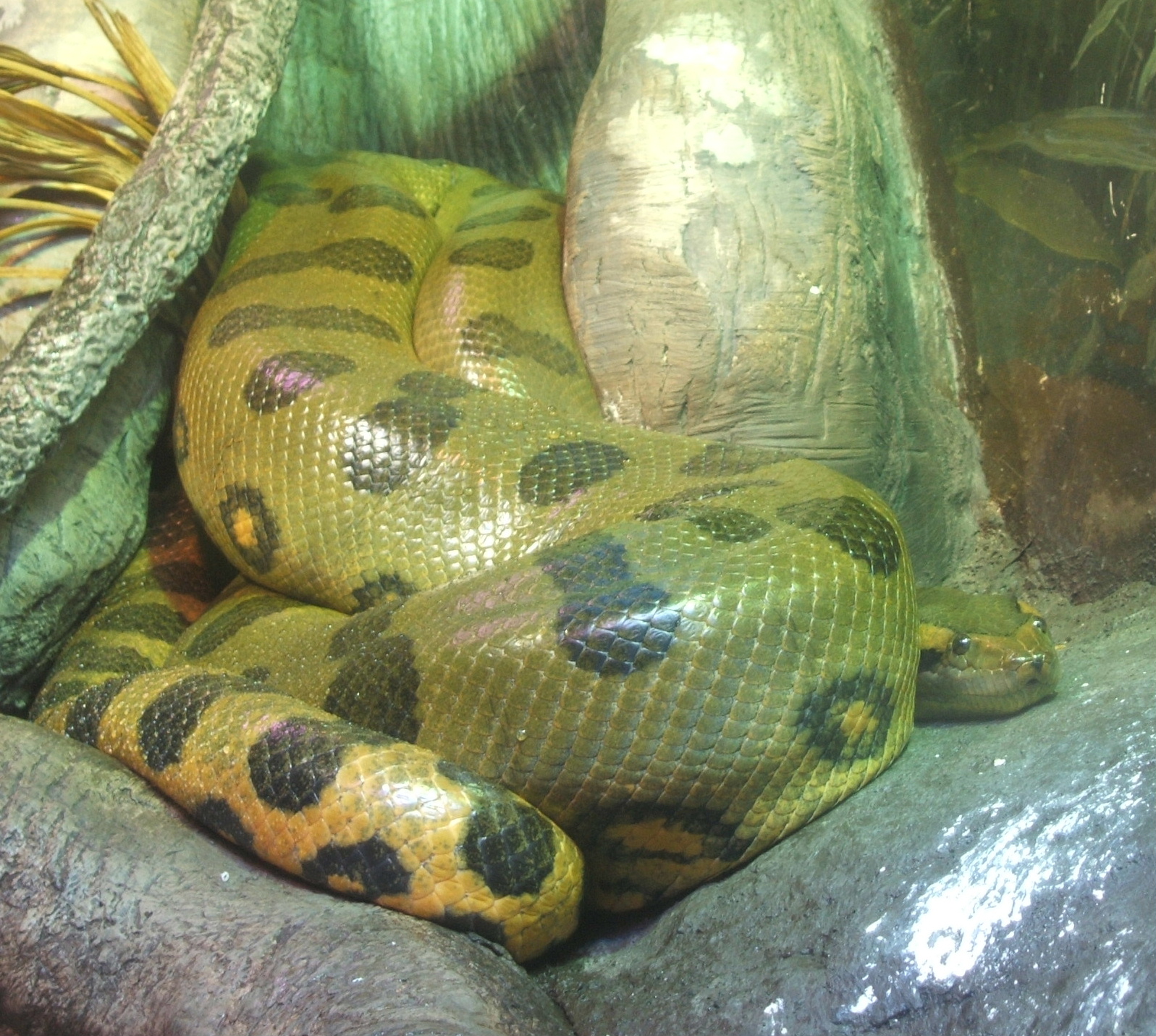


Eunectes murinus, the green anaconda – the largest species, found east of the Andes in Colombia, Venezuela, the Guianas, Ecuador, Peru, Bolivia, Brazil and Trinidad and Tobago.Any member of the genus Eunectes, a group of large, aquatic snakes found in South America:.The name commonly used for the anaconda in Brazil is sucuri, sucuriju or sucuriuba. A Sinhalese origin was also suggested by Donald Ferguson who pointed out that the word Henakandaya ( hena lightning/large and kanda stem/trunk) was used in Sri Lanka for the small whip snake ( Ahaetulla pulverulenta) and somehow got misapplied to the python before myths were created. Yule and Frank Wall noted that the snake was in fact a python and suggested a Tamil origin anai-kondra meaning elephant killer. Edwin described a ' tiger' being crushed to death by an anaconda, when there actually never were any tigers in Sri Lanka. Henry Yule in his Hobson-Jobson notes that the word became more popular due to a piece of fiction published in 1768 in the Scots Magazine by a certain R. Tancred Robinson, but the description of its habit was based on Andreas Cleyer who in 1684 described a gigantic snake that crushed large animals by coiling around their bodies and crushing their bones. Ray used a catalogue of snakes from the Leyden museum supplied by Dr.

The word anaconda is derived from the name of a snake from Ceylon ( Sri Lanka) that John Ray described in Latin in his Synopsis Methodica Animalium (1693) as serpens indicus bubalinus anacandaia zeylonibus, ides bubalorum aliorumque jumentorum membra conterens. The South American names anacauchoa and anacaona were suggested in an account by Peter Martyr d'Anghiera, but the idea of a South American origin was questioned by Henry Walter Bates who, in his travels in South America, failed to find any similar name in use. 3 Species and other uses of the term "anaconda"Īlthough the name applies to a group of snakes, it is often used to refer only to one species, in particular, the common or green anaconda ( Eunectes murinus), which is the largest snake in the world by weight, and the second longest.


 0 kommentar(er)
0 kommentar(er)
